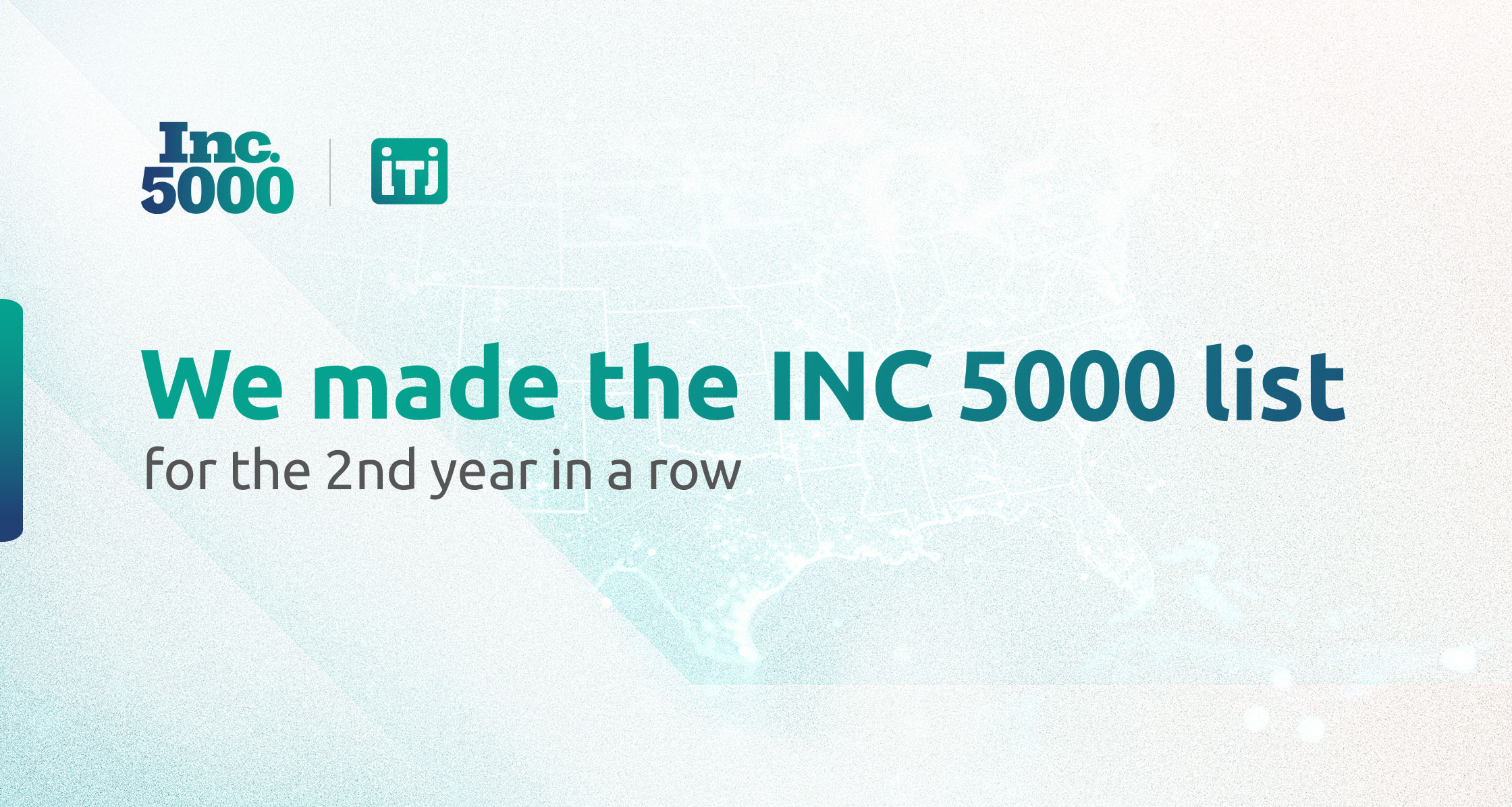San Diego, August 13, 2024 — Inc. revealed that ITJ secured a spot for the second year in a row ranking No. 918 on the 2024 Inc. 5000, its annual list of the fastest-growing private companies in America. The prestigious ranking provides a data-driven look at the most successful companies within the economy’s most dynamic segment.
The Inc. 5000 class of 2024 represents companies that have driven rapid revenue growth while navigating inflationary pressure, the rising costs of capital, and seemingly intractable hiring challenges. Among this year’s top 500 companies, the average median three-year revenue growth rate is 1,637 percent. In all, this year’s Inc. 5000 companies have added 874,458 jobs to the economy over the past three years.
ITJ, a leader in software engineering and digital innovation, proudly announces its inclusion on the Inc. 5000 list for the second consecutive year. This recognition places ITJ among the top 18% of the fastest-growing companies in the United States, underscoring a significant achievement in its growth trajectory.
Key Rankings Achieved:
- #18 in San Diego, highlighting ITJ’s impact and leadership within the local community.
- #108 in Software, affirming industry leadership.
- #140 in California, demonstrating strength amidst formidable state competition.
This recognition celebrates ITJ’s unwavering commitment and the exceptional capabilities of their binational team. Drawing from the America’s rich technology talent and establishing Technology Centers of Excellence in the Tijuana/San Diego area, ITJ excels in delivering agile and innovative solutions to the Life Sciences, Biotechnology, and Medical Devices industries.
See the full list of results in the Inc 5000 ITJ 2024 profile.
About ITJ
ITJ is devoted to serving fast-growing and high-value market sectors, particularly the Internet of Medical Things (IoMT), working with innovative medical device companies looking to improve people’s lives. With a unique BOT (build, operate, and transfer) model that sources only the best digital talent available, ITJ enables companies in the US to create technology centers of excellence in Mexico. For more information, visit www.itj.com.


